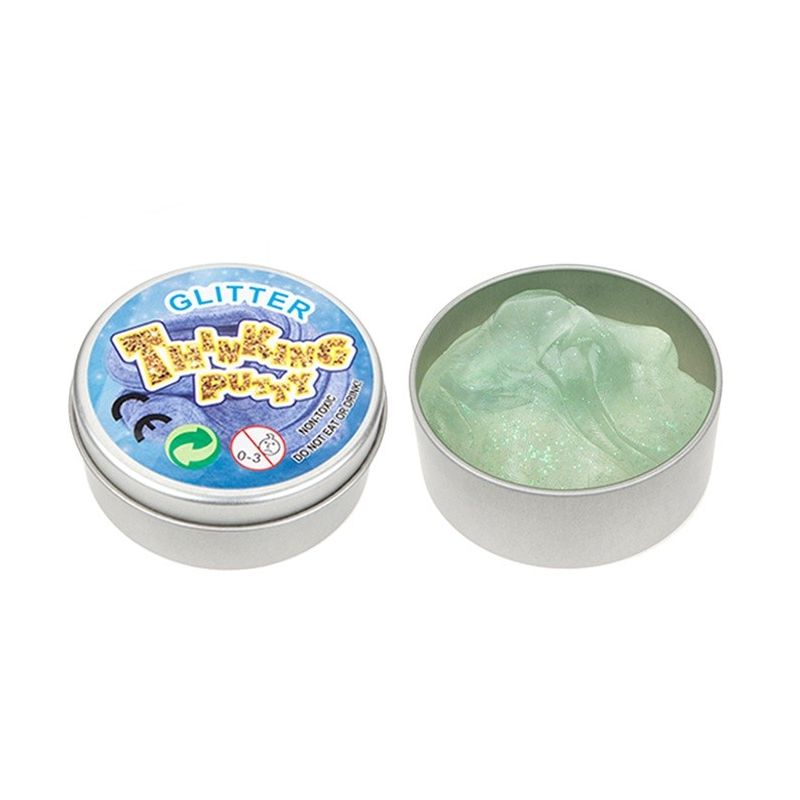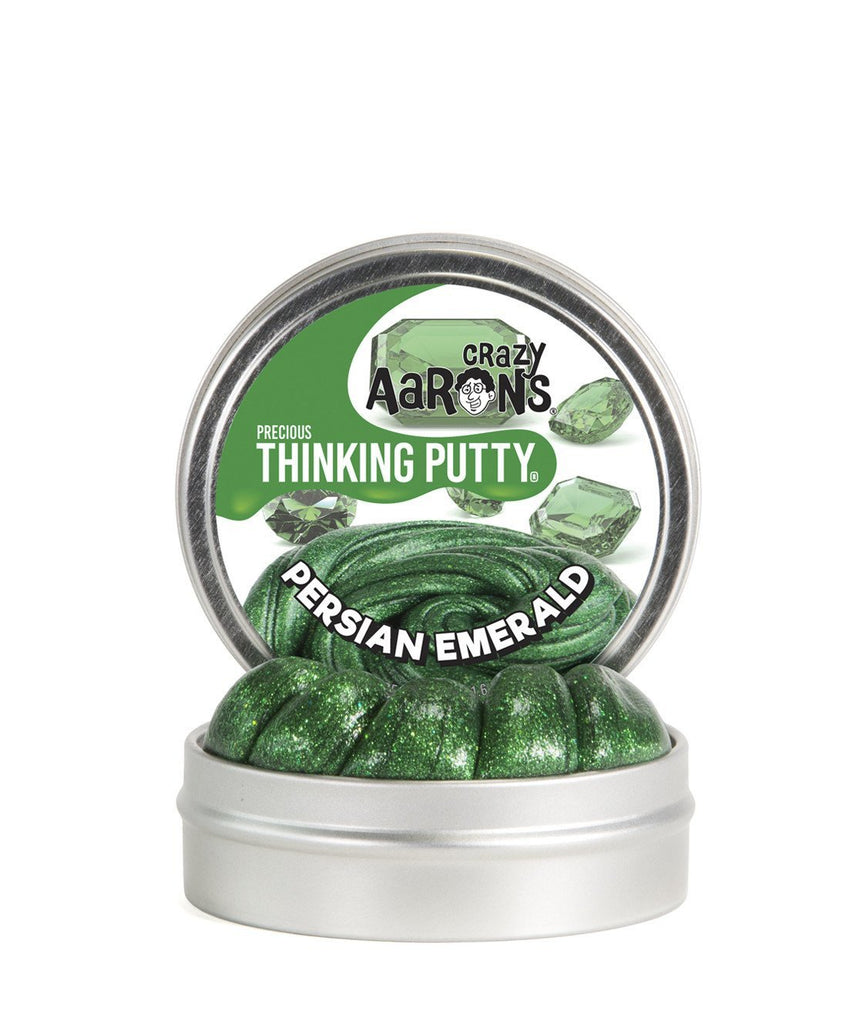

Silly Putty is sold as a 13 g (0.46 oz) piece of clay inside an egg-shaped plastic container.

After a long period of time, it will return to its original viscosity. It also becomes harder to remove small amounts of it from surfaces. If Silly Putty is submerged in warm or hot water, it will become softer and thus "melt" much faster. Silly Putty will dissolve when in contact with an alcohol after the alcohol evaporates, the material will not exhibit its original properties. Hand sanitizers containing alcohol are often helpful. Generally, Silly Putty is difficult to remove from textured items such as dirt and clothing. Newer papers with soy-based inks are more resistant to this process. When newspaper ink was petroleum based, Silly Putty could be used to transfer newspaper images to other surfaces, providing amusement by distorting the transferred image afterwards. Silly Putty is also a fairly good adhesive. Because its apparent viscosity increases directly with respect to the amount of force applied, Silly Putty can be characterized as a dilatant fluid. Viscoelasticity is a type of non-Newtonian flow, characterizing a material that acts as a viscous liquid over a long time period but as an elastic solid over a short time period. Silly Putty's unusual flow characteristics are due to the ingredient polydimethylsiloxane (PDMS), a viscoelastic substance. The original coral-colored Silly Putty is composed of 65% dimethylsiloxane ( hydroxy-terminated polymers with boric acid), 17% silica (crystalline quartz), 9% Thixatrol ST ( castor oil derivative), 4% polydimethylsiloxane, 1% decamethyl cyclopentasiloxane, 1% glycerine, and 1% titanium dioxide. Silly Putty and most other retail putty products have viscoelastic agents added to reduce the flow and enable the putty to hold its shape. It bounces but breaks when given a sharp blow it can also float in a liquid and will form a puddle given enough time. Other names are used to market similar substances from other manufacturers.ĭescription Video showing Silly Putty bouncingĪs a bouncing putty, Silly Putty is noted for its unusual characteristics. The name Silly Putty is a trademark of Crayola LLC. It was originally created during research into potential rubber substitutes for use by the United States in World War II. It contains viscoelastic liquid silicones, a type of non-Newtonian fluid, which makes it act as a viscous liquid over a long time period but as an elastic solid over a short time period. It bounces, but it breaks when given a sharp blow, and it can also flow like a liquid. Silly Putty is a toy containing silicone polymers that have unusual physical properties. For the cave in Utah, see Nutty Putty Cave.


 0 kommentar(er)
0 kommentar(er)
